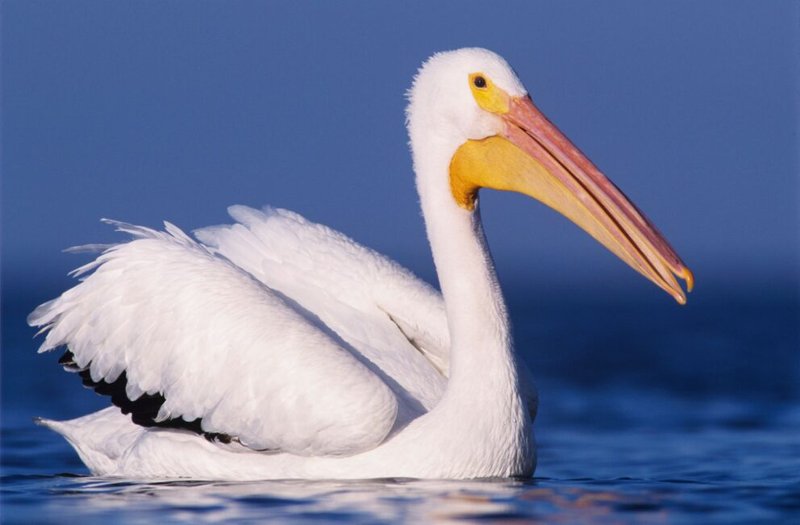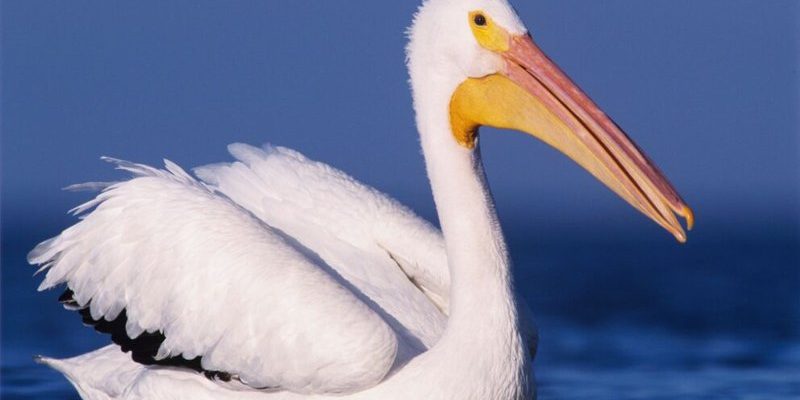
Imagine a bird so large and remarkable that it seems to glide effortlessly across the water, its enormous bill stretching out like a scoop waiting to catch fish. This is the pelican! These incredible birds are known for their distinctive appearance and unique hunting techniques. With their graceful demeanor and sociable nature, pelicans capture the hearts of those who observe them in their natural habitats.
Pelicans belong to the family Pelecanidae and are characterized by their long bills and large throat pouches. There are eight different species of pelicans, each with its own unique traits and behaviors. From the white pelican found in North America to the brown pelican along coastal regions, these birds are as fascinating as they are diverse.
Physical Characteristics
When you think of a pelican, the first thing that comes to mind is probably its size. Pelicans are among the largest flying birds, with some species weighing over 30 pounds and having wingspans that can reach 10 feet! Their large, elongated bodies are complemented by a massive bill, which can measure up to 18 inches long. This bill is not just for show; it’s a finely-tuned tool designed for catching fish.
The pelican’s most distinctive feature is its throat pouch, which can hold several gallons of water. This is where the magic happens. When a pelican dives or swoops down into the water, it uses its pouch to scoop up fish and water, then drains the water before swallowing its catch. It’s like watching a skilled chef at work, masterfully executing a recipe for success!
In terms of coloration, pelicans can vary quite a bit. The American white pelican boasts a striking white body with black wing tips, while the brown pelican is known for its dark brown feathers and lighter head. These variations add to their charm and make them a delight to watch in the wild.
Habitat and Distribution
Pelicans are versatile birds and can be found in a variety of habitats. They thrive in regions where there is an ample supply of water, such as lakes, rivers, and coastal areas. You might spot these birds along shorelines, marshes, and even inland bodies of water. The American white pelican, for example, prefers shallow lakes, where it can easily find food.
Different species of pelicans have different ranges. The white pelican is commonly found in North America, whereas the brown pelican primarily inhabits coastal areas of the Americas. It’s fascinating to see how these birds have adapted to their environments, developing unique hunting strategies suited to their specific habitats.
Migration is also part of their story. For instance, the American white pelican migrates thousands of miles between its breeding and wintering grounds. This seasonal journey is a sight to behold, as flocks of these magnificent birds soar through the sky, often in a beautiful V formation. It’s a reminder of the natural rhythms and cycles of wildlife.
Diet and Feeding Habits
Pelicans are primarily fish eaters, and they have developed some impressive techniques for catching their prey. Their feeding strategy mostly involves cooperative hunting. Pelicans often work together in groups, forming a circle to herd fish into a tight cluster. It’s a team effort that ensures everyone gets a meal!
Once the fish are trapped, pelicans swoop in with their broad bills, scooping up as many as they can. The throat pouch plays a crucial role in this process. After catching the fish, they drain the water by tilting their heads back, allowing them to swallow their slippery catch. It’s a remarkable display of adaptation and skill, showcasing how these birds have evolved to thrive in their environments.
While fish makes up the bulk of their diet, pelicans are opportunistic feeders. They will occasionally eat crustaceans, amphibians, and even small birds. Some species of pelicans have been known to steal food from other birds, adding to their reputation as clever foragers. It’s a bit like a buffet, where they take advantage of whatever is available!
Social Behavior and Reproduction
Pelicans are social creatures, often seen in large groups both while feeding and nesting. This social behavior is not just for fun—it also plays a role in their survival. By working together, they can ensure plenty of food and protection from predators. When you see a flock of pelicans flying gracefully in unison, it’s a sight that speaks to their strong social bonds.
During the breeding season, pelicans gather at colonies where they create nests. These nests are usually simple depressions in the ground, often made of vegetation and located near water. Depending on the species, females typically lay 1 to 3 eggs, and both parents take turns incubating them. It’s a team effort once again!
Once the eggs hatch, the parents continue to provide care, feeding their young by regurgitating partially digested food. This nurturing phase is critical for the chicks, allowing them to grow strong enough to eventually take flight. Watching a young pelican learn to fly is enchanting—it’s a reminder of nature’s beauty and the cycle of life.
| Species | Wingspan | Weight | Diet | Habitat |
| American White Pelican | 8 – 10 ft | 10 – 30 lbs | Fish, crustaceans | Shallow lakes, marshes |
| Brown Pelican | 6 – 8 ft | 6 – 12 lbs | Fish | Coastal regions |
Conservation Status
While many pelican species are thriving, others face threats from habitat loss, pollution, and climate change. Coastal development, in particular, has reduced the nesting areas for some pelicans, impacting their ability to reproduce successfully. Conservation efforts are crucial to ensure the survival of these magnificent birds for future generations.
Organizations dedicated to wildlife conservation are working to protect pelican habitats and educate the public about the importance of preserving these unique birds. Efforts include creating protected areas, monitoring populations, and restoring natural habitats. It’s a collective responsibility to safeguard these incredible creatures.
If you’re ever fortunate enough to see pelicans in the wild, take a moment to appreciate their beauty and the role they play in our ecosystem. You might even consider supporting local conservation initiatives or bird-watching organizations that help to protect their habitats.
Pelicans Around the World
Pelicans can be found on every continent except Antarctica, showcasing their adaptability and resilience. From the tropical coasts of Florida to the wetlands of Africa, these birds thrive in diverse conditions. Even within species, there’s a wealth of variety to explore.
The Australian pelican is known for its remarkable ability to dive into the water from great heights, while the Peruvian pelican is famous for its striking appearance, with a strikingly colorful bill. Each species offers a unique glimpse into the world of pelicans, highlighting the importance of biodiversity in our ecosystems.
Observing pelicans in different parts of the world can be an enriching experience. It’s interesting to see how their behaviors and adaptations differ based on their environments. Whether you’re a birdwatcher or just a curious observer, there’s always something new to learn about these fascinating creatures!
FAQ
What do pelicans use their throat pouch for?
Pelicans use their throat pouch primarily for catching and holding fish. When they dive into the water, they scoop up fish along with some water into the pouch. Once they’ve trapped their prey, they tilt their heads back to drain the water, allowing them to swallow the fish easily. This unique adaptation helps them be efficient hunters.
How do pelicans communicate?
Pelicans communicate using a variety of vocalizations, including grunts, growls, and hisses. These sounds are often used to establish territory, attract mates, or communicate with their young. Body language also plays a significant role in their social interactions, such as the way they display their wings or posture to convey dominance or submission among their peers.
Are pelicans migratory birds?
Yes, many species of pelicans are migratory. For instance, the American white pelican migrates between its breeding grounds in North America and wintering grounds in southern regions. This seasonal migration allows them to find suitable habitats and food sources throughout the year. Observing their migration patterns can be a thrilling experience for birdwatchers.
How long do pelicans live?
In the wild, pelicans can live for about 10 to 25 years, depending on the species. Their lifespan can be significantly influenced by factors such as habitat quality, food availability, and threats from predators or human activities. In captivity, where they receive care and protection, pelicans may live longer than they would in the wild.
What threats do pelicans face?
Pelicans face several threats, including habitat loss due to coastal development and pollution. Climate change is also impacting their habitats, leading to changes in food availability and nesting areas. Conservation efforts are vital to address these challenges and ensure the survival of pelican populations around the world.
Do pelicans have any natural predators?
Yes, pelicans can fall prey to various predators, particularly when they are nesting or caring for their young. Birds of prey, such as eagles and hawks, may target young pelican chicks. Additionally, larger mammals, like coyotes, can pose a threat to nesting adults and chicks when they venture too close to shorelines.
Can pelicans and humans coexist?
Absolutely! While pelicans and humans can coexist, it’s important for us to be mindful of their habitats. Responsible wildlife watching, protecting nesting sites, and reducing pollution can help preserve pelican populations. Educating ourselves and others about these birds and their needs is crucial for maintaining a balance between our activities and their survival.
What are some interesting facts about pelicans?
Pelicans have some fascinating traits! For instance, did you know that they can dive from heights of up to 60 feet to catch fish? Or that the brown pelican is the only pelican species that feeds by diving? Their cooperative hunting technique is also a remarkable aspect of their behavior, showcasing a level of intelligence and teamwork among these birds.
What is the significance of pelicans in culture?
Pelicans have appeared in various cultural symbols and myths throughout history. They are often associated with selflessness and nurturing due to their care for their young. In some cultures, pelicans symbolize community and cooperation, making them cherished figures in folklore and art. Their stunning appearance and behaviors continue to inspire artists and storytellers alike!
How can I help with pelican conservation?
You can contribute to pelican conservation efforts by supporting local wildlife organizations and participating in clean-up efforts near their habitats. Educating yourself and others about the importance of preserving their environments can also create a positive impact. Additionally, practicing responsible birdwatching and minimizing disturbances to nesting sites are great ways to show your support!

